Most people who go to Miami for the first time make a point to visit Little Havana, the well-known Cuban neighborhood with authentic cuisine, local art, and domino players in the park. I know I did when I first visited.
Related: Miami: Beyond the Beach and the Bar
But there’s another “little” neighborhood in the city that often stays in the shadows. Little Haiti is South Florida’s cultural heart for the Haitian Diaspora, and unlike Little Havana, it retains an entirely un-touristy vibe.

On the third Friday of each month, the Little Haiti Cultural Center hosts a festival from 6-10pm that’s open to the public. The main goal is to provide a space to bring together people and ideas, while showcasing and supporting Afro-Caribbean culture in Miami.
It’s called “Big Night in Little Haiti” and it’s an evening of music, art, food, drinks, and opportunities to learn a little bit about Haitian history. I had no idea what to expect when I showed up and thought it could have been anywhere from a tiny neighborhood gathering of resident families to an all-out street bash.
It was somewhere in between…and totally worth a visit. Unlike pretty much anything else you’d choose to do on a Friday night in Miami, this festival is free to attend and has free parking nearby.
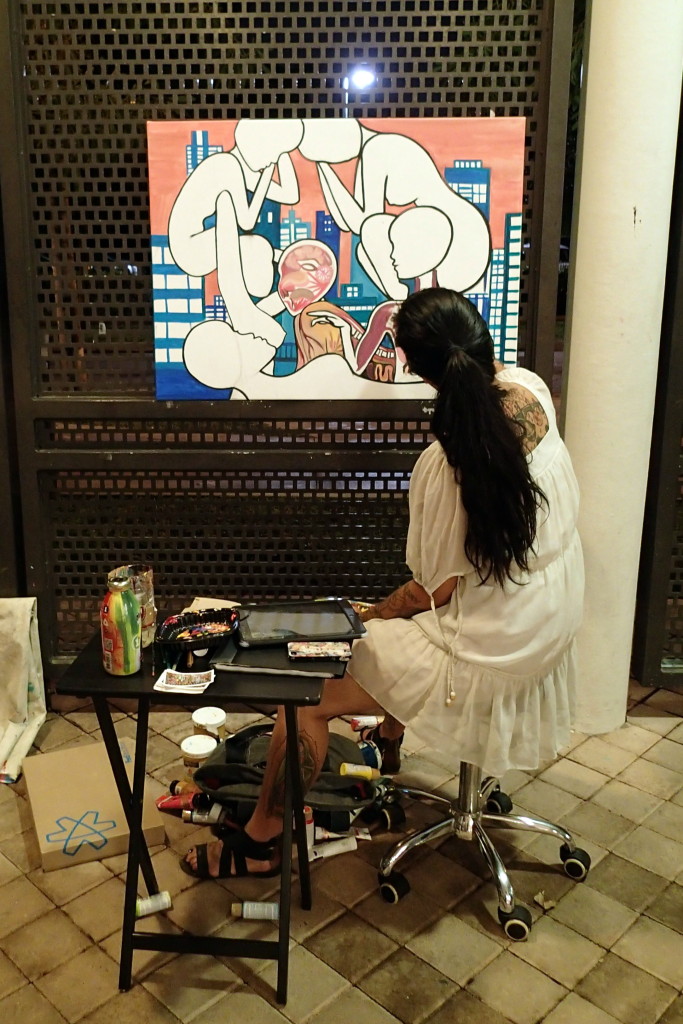
There were some local artists doing their thing and even an inviting classroom to wander into and create a sub par masterpiece of your own. The art instructors were doing an exercise using gold paint on black paper and invited me to come in and paint whatever I wanted.
As to not miss out on other festival happenings too much, I hastily painted an obscure nature scene, with of course, an awkward gnome lurking in the background.
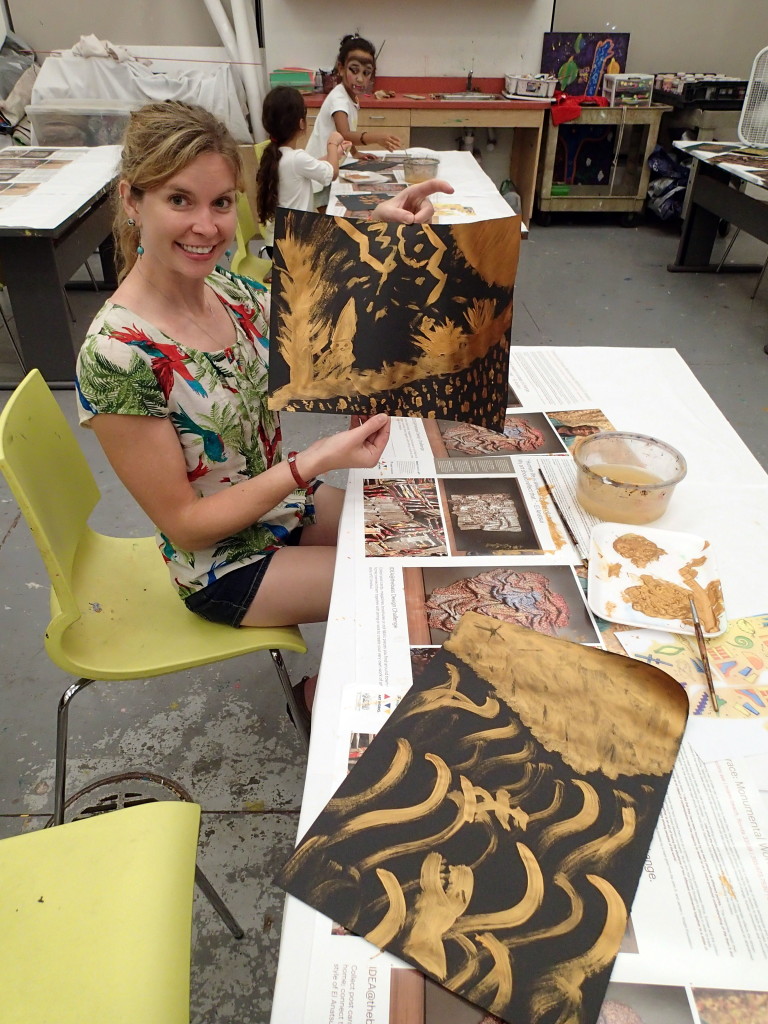
Also inside the Little Haiti Cultural Center, there was a presentation/fundraiser going on to highlight the work of a famous Haitian jazz singer from a few decades ago. This was a place to bid on professional photographs positioned on the walls, listen to the artist’s music through headphones, and sip some free wine in a plastic cup.
And then there was the food. A cafeteria-style line formed outside beside a long table with Haitian home cooked foods like chicken, fried fish, rice, tostones, and spicy coleslaw. I washed my delicious dinner down with some rum punch with fresh pineapple!
The large meal was $10 and the generously-sized drink was $4. By Miami standards, this was an absolute steal. I’ll sit on the sidewalk and enjoy an authentic meal like this over an overpriced, over-hyped restaurant almost any day.
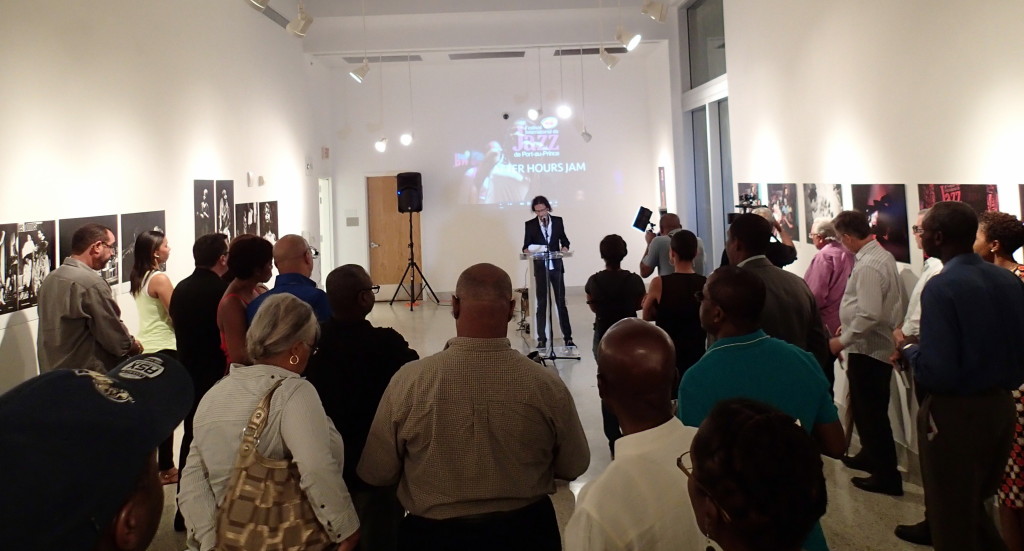
The monthly festival has been going on for a few years now and music is a huge part of the whole thing. A reggae-style band played during the entire festival and made me remember how much I really do enjoy a good reggae tune to bop along to in a crowd of strangers. Recently featured bands have included Moksha Roots, Harmonik, Tvice, and Zenglen.
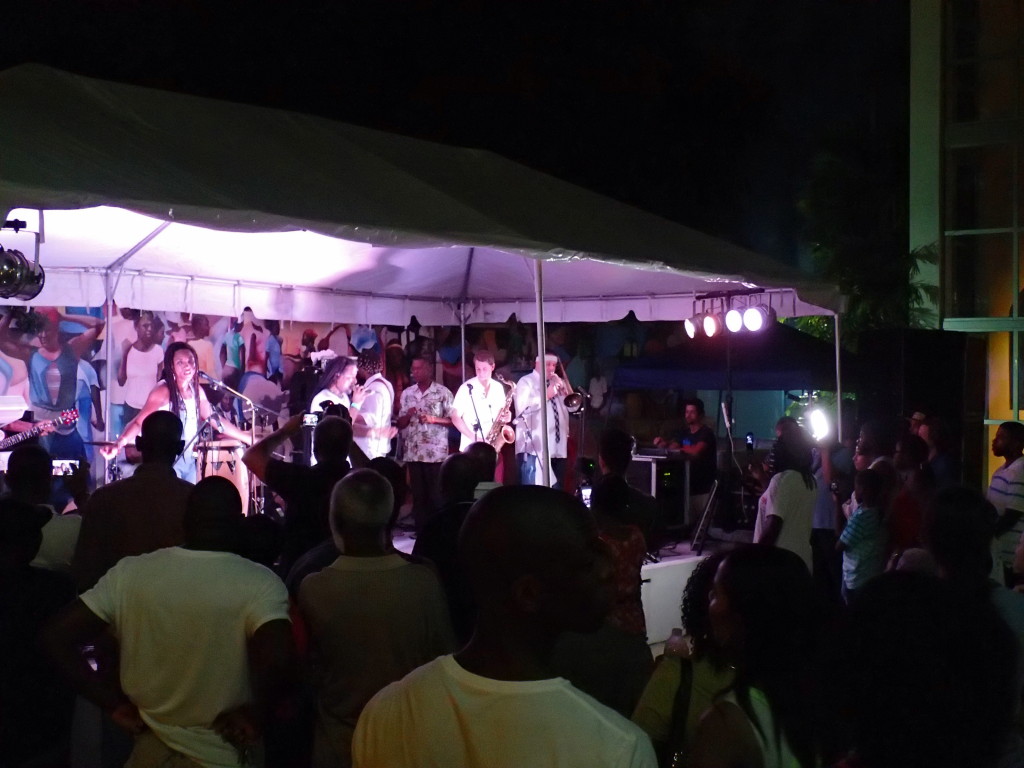
Aside from the super-nice cultural center, other highlights in the neighborhood are the Haiti Sweat Records Building, Little Haiti murals, Churchill’s Pub, and small local shopping centers. A bronze statue of General Toussaint L’Ouverture, the father of Haitian independence, stands at Northeast 2nd Avenue and 62nd Street.
The Little Haiti neighborhood is totally off the beaten path of the tourist circuit and would be hard to pinpoint without a GPS. In fact, Miami residents have long been debating what to call this neighborhood because it has no formal boundaries or designated cultural protections. Some call it Little Haiti and and others swear it’s Lemon City.
“Nobody has a true definition of Little Haiti because there are no formal boundaries. It’s pretty subjective,” said historian and Miami Dade College professor Paul George.
“Every day you hear of a new group encroaching into what we know as Little Haiti,” said Marleine Bastien, a Haitian activist pushing for the designation. “These groups moved into Little Haiti, so I don’t understand why they don’t want it to be named Little Haiti anymore.”
Little Haiti gained its name as Haitian migrants, fleeing the regime of Jean Claude “Baby Doc” Duvalier, moved into the neighborhood in the late 1970s and early 1980s. Haitian pioneer Viter Juste wrote a letter to the Miami Herald calling the area “Little Port-au-Prince,” and the newspaper headlined the letter “Little Haiti”. And the name stuck.
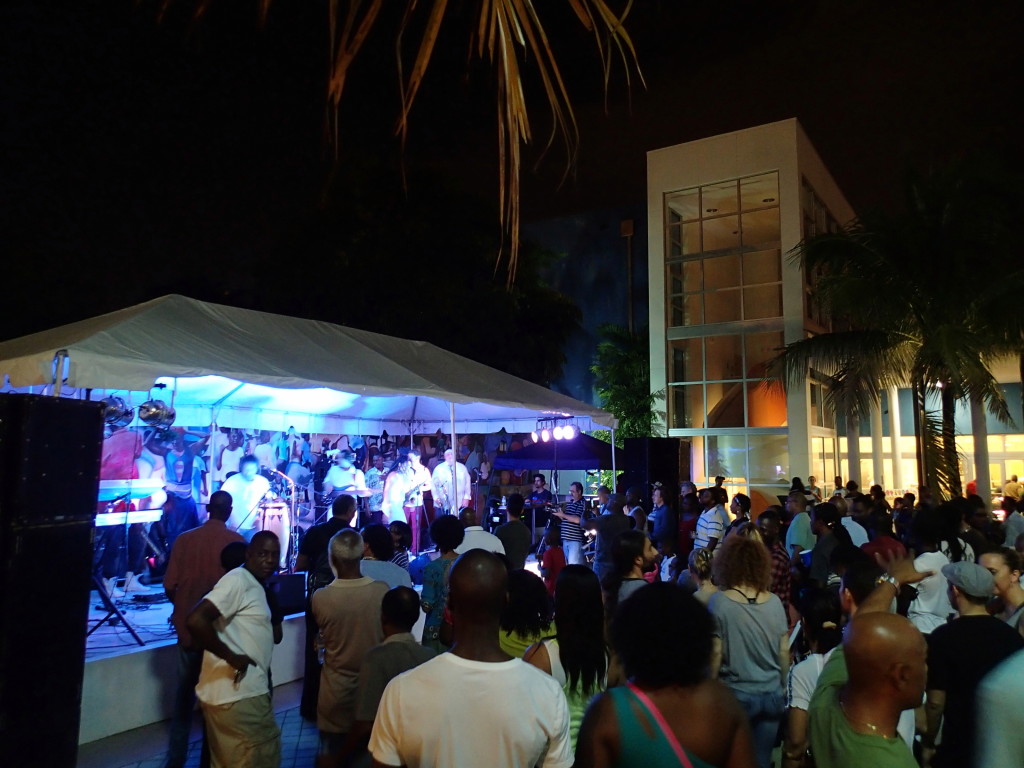
I’m all about finding authentic non-touristy things to do in places I visit…especially if it isn’t my first time in the area. Some of those ideas work out great and others are a total bust. The Friday festival at Little Haiti tops my list of recent undercover finds.
It’s pretty obvious that I’m not of Haitian descent, but I loved learning a little about Haitian history and joining such a specific celebration of local culture. So consider this an addendum to my previous blog post about non-transitional things to do in Miami and check it out next time you’re in the area!
